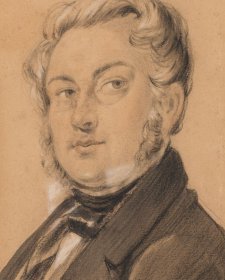- About us
- Support the Gallery
- Venue hire
- Publications
- Research library
- Organisation chart
- Employment
- Contact us
- Make a booking
- Onsite programs
- Online programs
- School visit information
- Learning resources
- Little Darlings
- Professional learning
Charles Rodius was one of a number of artists whose Australian careers commenced in convictism. German-born, Rodius had spent several years in Paris where he studied and worked as a teacher of 'music, painting, drawing and languages in families of the first distinction'. He then went to London where, in 1829, he was convicted of theft and sentenced to transportation to New South Wales for seven years. In so far as it was possible for those in his predicament, Rodius was fortunate in being possessed of a skill for which there was demand in Sydney, and very soon after he arrived he was assigned to the Department of Public Works as a draughtsman. He turned this situation to advantage, using his access to a lithographic press to create a portrait of Bungaree in early 1830 and then finding work as a drawing teacher to 'most of the Civil and Military officers'. He subsequently completed commissions for the free settler and ex-convict classes as well as producing prints - and portraits particularly - for the popular market. His output, consequently, includes lithographs of the notorious felons John Knatchbull and John Jenkins (sold as souvenirs of their executions) and of explorer Ludwig Leichhardt, as well as
portraits of Aboriginal people from the Sydney, Broken Bay and Shoalhaven districts, which were sold 'at such charges as will place [them] within the reach of all classes.'
Purchased 2009
Charles Rodius (age 47 in 1849)



On one level The Companion talks about the most famous and frontline Australians, but on another it tells us about ourselves.



Joanna Gilmour revels in accidental artist Charles Rodius’ nineteenth century renderings of Indigenous peoples.



Joanna Gilmour accounts for Australia’s deliciously ghoulish nineteenth century criminal portraiture.